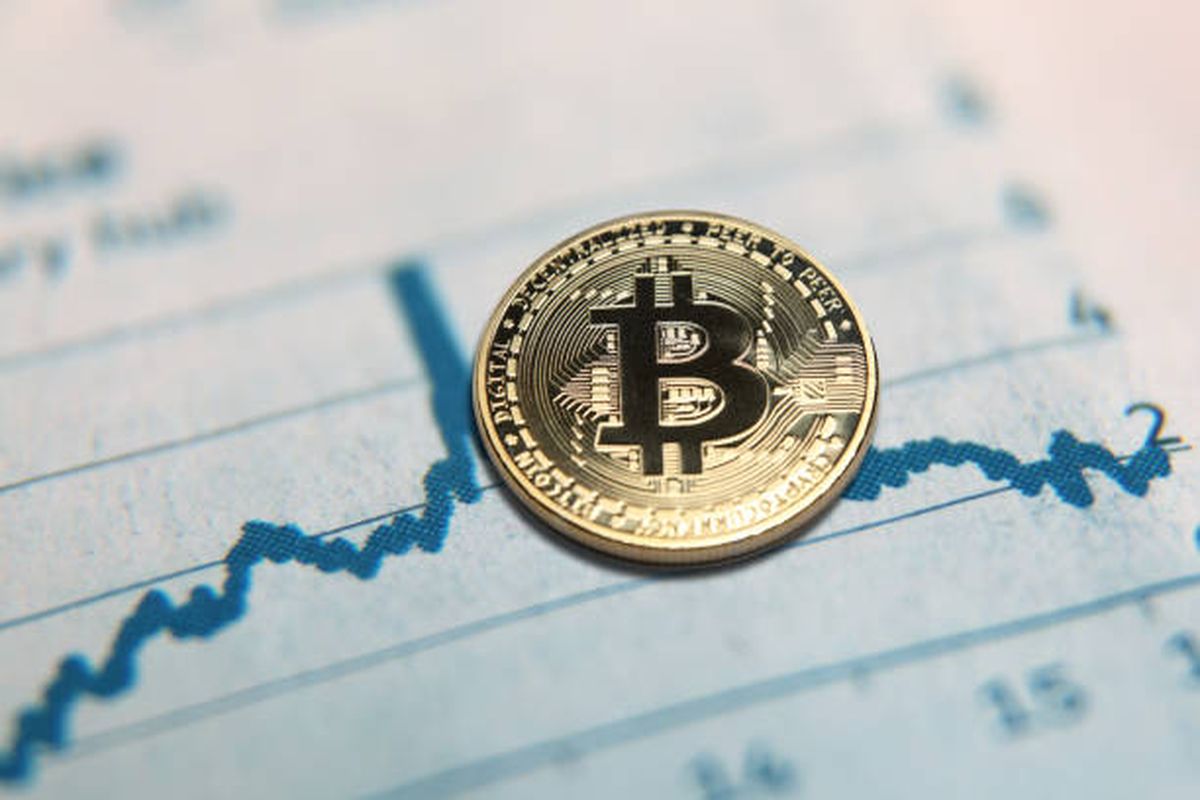In recent months, it has been noted that increasing interest rates have acted as a significant catalyst for the Bitcoin drops. However, does the flagship crypto have more potential to fall further as the Fed keeps hiking interest rates?
The current global economic environment offers a perfect ground for massive movements in risky assets. Bitcoin is already accepted as an asset class. However, it is still a higher-risk asset, similar to speculative tech stocks.
Bitcoin’s story keeps changing as the crypto space develops. The cryptocurrency leader’s positive momentum has reversed in 2022 as the market is experiencing some seismic shifts. Several factors are contributing to Bitcoin’s price weakness, but a huge part of it has to do with rising interest rates in an inflationary environment.
In April, the consumer price index, which is the standard gauge of inflation, was up 8.3% from a year ago but has surged to reach 40-year highs of 9.1% in June. In an aim to reduce inflation in the economy, the Federal Reserve is moving toward a tighter monetary policy as seen in its latest decision to increase interest rates by 75 basis points in June and July, the steepest increase in over 20 years.
Since April, the stock market responded with an extended sell-off, with stocks across the board pulling back. Cryptos including Bitcoin has also followed the moves made by the stock markets. The price of Bitcoin lost 37% from the New Year up to May 12 and has since dropped by nearly 65% from its November all-time highs as of July 28, 2022.
Related: The Fall of Bitcoin: What Knowledge Do You Need to Have in Order to Predict Profits?
As the market expects inflation to remain above the Fed’s target, the central bank is anticipated to continue to hike interest rates throughout this year until inflation drops to manageable levels. If the current scenario follows through until the end of the year, it is worth reviewing what it means for Bitcoin and how the crypto traders and investors can respond to:
- Bitcoin’s correlation to the stock market
- Bitcoin’s maturation
- How are Bitcoin investors responding to interest rate hikes?
Bitcoin’s Correlation To The Stock Market
The impact of rising interest rates on Bitcoin is the latest change that seems to have been taking over the crypto trading atmosphere. During the entire time, the price of Bitcoin has been highly volatile. But, Bitcoin is not alone in experiencing volatility. In recent months, there have been considerable correlations between movements in Bitcoin and stock indicators like the NASDAQ and the S&P 500.
In general, tech stocks seem to struggle with rising interest rates. For instance, Amazon INC (AMZN) lost 35% from January 1 to May 12. During the same time, Apple Inc (AAPL) dropped by 18% and Meta Platforms Inc. (FB) lost over 42%.
Bitcoin seems to be following in this price action. The biggest crypto was trading above $30,000 before dropping to lows of $17,900. This market movement indicates that investors view Bitcoin as a “risk on” asset. Bitcoin followed the plunge in the equities market, although not in a drastic way, according to the partner and co-founder of financial services firm Wilshire Phoenix, William Cai.
Initially, Bitcoin was believed to be an uncorrelated asset to the wider stock market. This means that Bitcoin and traditional assets like bonds and stocks would not move in tandem or opposite directions. Theoretically, it meant that cryptos would act as portfolio diversifiers that could help protect against downside risks of other assets.
Related: Wall Street pumps following vaccine news while Bitcoin struggles
Nonetheless, the correlation between Bitcoin and stocks has increased recently, and experts expect the correlation will continue in the near and medium term. When will Bitcoin decouple from the stock market to gain the perceived status of digital gold?
The current economic environment offers an ideal ground for massive movements in risky assets. Although Bitcoin is accepted as an asset class, it is still considered a higher-risk asset, which is similar to speculative tech stocks. Based on data published by Arcane Research, the 90-day correlation between the S&P 500 and Bitcoin was 0.633 as of May 9.
Andy Long, CEO of White Rock Management, which is a global digital mining company, said:
“Short- to medium-term higher interest rates probably make for slightly less (of a) short-term bullish case (for) BTC.”
However, Andy Long said that in a space where there are hiked interest rates, free money, and a return of quantitative easing, Bitcoin is hard money that will not go away in the long term.
Bitcoin Is Maturing
Bitcoin’s reaction to the Fed’s actions to raise rates means that it is acting in tandem with the general market. Although it has just been around for 13 years, crypto is gradually transitioning into a mature asset class like bonds, stocks, and commodities.
The digital asset is no longer so risky and such a ‘fringe asset’ that investors liquidate when they are worried about volatility, according to Cai. He added:
“You used to see sell-offs in the Bitcoin market when people became worried. But now there’s more of an acceptance. Bitcoin has blended into the risky asset class.”
In the long term, investors expect to see de-correlation. However, for now, the high correlation is a major sign that the asset class is maturing. Cai added:
“It’s a positive sign that in periods of price drawdowns, there’s no panic in the underlying technology or industry as a whole.”
While the investors and traders are currently trying to determine what is next for crypto as the asset class remains volatile, the underlying assets and the adoption by Wall Street and institutional investors have been continuous and seem relentless.
How Are Bitcoin Investors Reacting To Interest Rates?
Activity in the crypto market seems to be slowing down. Experts believe that most of this is due to retail investors scaling back on crypto to ensure that they fit trading strategies into their risk tolerance capabilities. On the flip side, institutions have been investing considerably in the Bitcoin market in recent years.
Retail investors mostly buy when the market is going up and sell in a market panic, as highlighted by CEO of Parallel Finance, Yubo Ruan. Parallel Finance is a decentralized lending and staking protocol. When the markets fall, retail investors always cut their exposure, which is the fundamental psychology that powers the retail markets.
Institutions like hedge funds and crypto-specific venture funds are coming in massively and buying the dip. Some of them are near-term buyers, but a majority are holding crypto for the long term, and seem to be using the market drop to accumulate BTC at a discount.
With inflation considerably high, retail investors require cash flow. Analysis shows that retail investors are emotional. Hence, they sometimes buy a large amount of bitcoin, and when the crypto falls sharply, they require money and are afraid of how long it will take the market to recover, so they want to get rid of the risk involved.
Related: Countries Suffering From Rapid Inflation Show Significant Demand for Cryptos
What can investors do in the mainly chaotic crypto market?
Long highlighted:
“The best thing you can do with Bitcoin is, lock it in a box and look at it in five, 10 years. If you try to guess the market, the market, in turn, is good at fooling you.”
Looking into the near-term, Ruan believes that Bitcoin might have already bottomed:
“We can potentially see a Bitcoin bottom somewhere between $20,000 and $25,000, which can be a good region to accumulate.”
How Higher Interest Rates Will Impact Crypto And Commodities Markets
These two major asset classes have had varied responses in the wake of increasing interest rates. While crypto prices have dropped together with all the other risky assets, most of the commodities spiked higher, including wheat, oil, and nickel. However, the bullish trend proved short-lived.
Crypto has mostly been touted as a cure-all for what ails you, whether low-interest rates, inflation, devaluation of the dollar, lack of purchasing power, and a lot more. All these positives were easy to believe if the crypto prices kept rising, somehow irrespective of the other assets.
According to Caleb Tucker, director of the portfolio strategy at Merit Financial Advisors in the Atlanta area:
“Crypto assets had been seen as an inflation hedge, but recently they have acted more like other risk assets such as stocks. Higher rates will be a headwind for crypto assets going forward.”
Cryptos responded to reduced liquidity just like other risky assets. They plunged when the Fed confirmed in November 2021 that it would start tapering its purchases of bonds, signaling that higher interest rates were soon coming up. In July, the fed raised interest rates by another 75 basis points as it did in June.
Strangely, after the announcement on July 27, the crypto markets are experiencing a relief rally with bitcoin trying to recapture the $23,000 level.
Dan Raju, CEO of Tradier, a brokerage platform, said that crypto assets are feeling the headwinds of higher rates. But, he expects an up year:
“I strongly believe crypto will be a net positive in 2022 because any short declines driven by rate hikes will be offset by greater institutional and retail active trader adoption of this asset class.”
While the prices of some commodities have exploded, in most cases these commodities have retraced some, if not all, of those gains. The markets are well below their recent highs, as lesser supply constraints and higher interest rates work to take them down.
For instance, the price of wheat surged in the early weeks of the Russian invasion of Ukraine, but the prices are now back to where they were several months before the crisis. Lumber is down over 50% from its 52-week highs, while the price of steel has plunged in the past year. Nickel is back to where it was a year ago after doubling in value due to the Russian invasion.
Related: Roundtable Interview-What is the Effect of The Russia-Ukraine War on Cryptocurrency Prices?
While most commodities have spiked and then dropped, more Supply-constrained and critical commodities like natural gas and oil remain high, despite being below their record levels. In the case of crypto, it is yet to decouple from the stock markets and analysts expect it to follow stocks and bonds in the near term.











